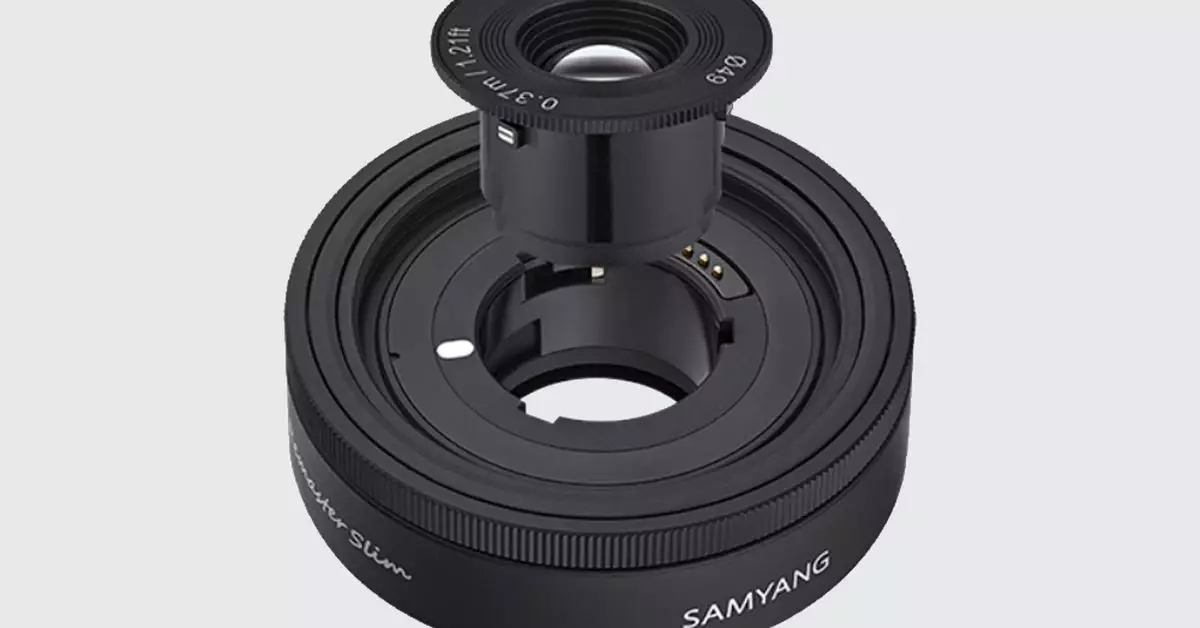Samyang has introduced a new prime lens that allows photographers to change the focal length by swapping out optical elements inside the lens, rather than having to switch out the entire lens. This innovative design aims to simplify the process of capturing shots without the need for multiple lenses.
Prime lenses, which do not have zoom capabilities, offer advantages such as sharper images and a shallower depth of field. These characteristics can enhance the quality of photographs and provide a more artistic touch to the final results.
The Remaster Slim autofocus lens by Samyang is only 0.8 inches thick, making it a compact and lightweight option for photographers. The lens features a smaller magnetic mount that allows for easy swapping of optical elements, reducing the need to carry multiple lenses in a camera bag.
Samyang will offer three different optical inserts for the Remaster Slim lens: a wider 21mm f/2.8, a 28mm f/3.5, and a 32mm f/3.5 ideal for closer portrait photography. These inserts provide versatility and convenience for photographers who want to experiment with different focal lengths without the burden of carrying multiple lenses.
The company claims that the Remaster Slim lens offers a “genuine analog sensibility,” reminiscent of old film cameras. While this may appeal to photographers seeking a nostalgic feel in their images, it also suggests that the lens may produce softer results compared to other prime lenses with faster maximum apertures.
The Remaster Slim lens is compatible only with Sony’s E-mount lens system. It was available for preorder in South Korea for approximately $229 USD before selling out. The lens is set to start shipping in early September, with broader availability in South Korea expected in early October. However, there is no announcement yet regarding availability in other markets.
While the Samyang Remaster Slim autofocus lens offers a unique and innovative approach to focal length adjustments, it comes with some tradeoffs. Photographers must consider the potential softness of the images produced by the lens and the limited compatibility with Sony cameras. Despite these drawbacks, the compact design and convenience of swapping optical inserts may appeal to photographers looking to simplify their gear without sacrificing quality.


Leave a Reply
You must be logged in to post a comment.